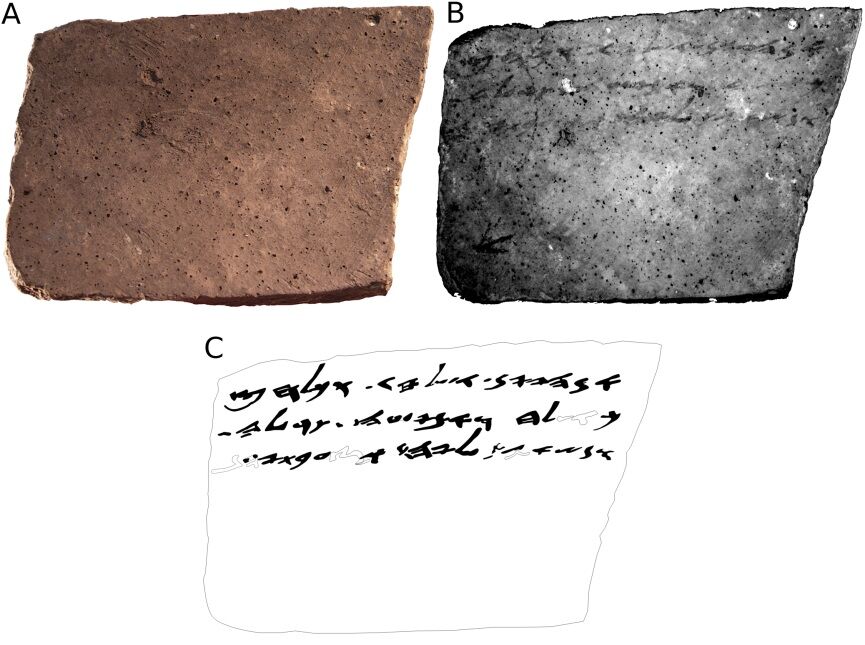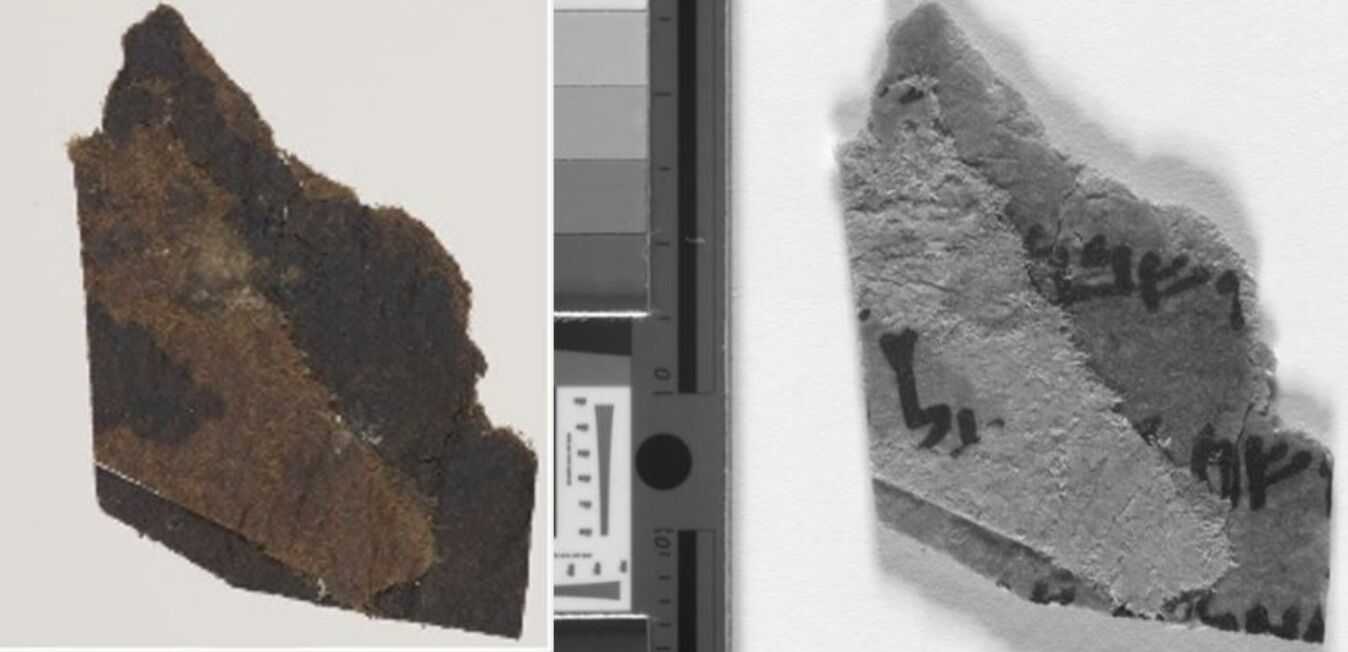Decades after their discovery, four “blank” fragments belonging to the Dead Sea Scroll collection have been discovered to contain text.
The Dead Sea Scrolls were found in 1947 in a series of caves near Qumran in the Judean desert. The approximately 950 scrolls of scriptures and religious texts are one of the most important and widely studied archaeological finds. The scrolls’ dates range between 200 b.c.e. and 68 c.e. The blank parchments were gifted to Ronald Reed of Leeds University in the 1950s to study the leather’s physical and chemical composition. That collection was then donated to the University of Manchester in 1997, and it has since remained untouched in a box on the shelves of the John Rylands Library. That is, until Prof. Joan Taylor of King’s College London reexamined one of the fragments.
“I … thought I might be imagining things,” Professor Taylor said in a press release from the University of Manchester about the find. As Taylor scrutinized one of the pieces of parchment under a microscope, she saw the faint mark of a letter—a lamed—the Hebrew letter “L.”
After discovering the letter, Taylor and her team studied dozens of other fragments for overlooked text. Using multispectral imaging, 51 of the “blank” fragments were photographed front and back. Four of the pieces of parchment were discovered to contain legible text in Hebrew or Aramaic, written in carbon-based ink. Other fragments contained the remnants of letters and rule lines to guide the scribe.
This new discovery is made even more exciting for archaeologists by the increasing number of Dead Sea Scroll fragments in the United States being confirmed as forgeries. Many of the original scrolls were discovered by Bedouin and sold on the antiquities market before the official excavation began. But these four specific pieces were unearthed in the official excavations. They are now the only authenticated textual fragments of the Dead Sea Scrolls in the United Kingdom.
The largest fragment contained four clear lines of text with 15 to 16 letters. Most of the words are broken up, but one word is clearly readable: Shabbat, the Hebrew word for Sabbath. Researchers believe that the text is an excerpt from the book of Ezekiel. Most likely from Ezekiel 46:1-3, which read:
Thus saith the Lord God; The gate of the inner court that looketh toward the east shall be shut the six working days; but on the sabbath day it shall be opened, and in the day of the new moon it shall be opened. And the prince shall enter by the way of the porch of the gate without, and shall stand by the post of the gate, and the priests shall prepare his burnt-offering and his peace-offerings, and he shall worship at the threshold of the gate; then he shall go forth; but the gate shall not be shut until the evening. Likewise the people of the land shall worship at the door of that gate before the Lord in the sabbaths and in the new moons.
The manuscripts from the Dead Sea Scrolls include either partial or a complete copy of every book in the Hebrew Bible (except the book of Esther). This means that for over 2,000 years the Hebrew Bible has remained exactly the same, allowing for grammatical variations. Discoveries like this strongly support the continuity and accuracy of the Bible. For more information on the archaeological evidence of Ezekiel and other prophets of the Bible, read Christopher Eames’s article “The Antiquity of the Scriptures: The Prophets.”
Technology Changing Archaeology
This discovery would not have been possible in years past. Recent scientific advances and new techniques in multispectral imaging (msi) have expanded what is possible in archaeology. msi used to be expensive and require bulky sensing equipment in high-tech labs, such as those at nasa. But improvements in technology have made it more portable and cost effective for archaeologists to use, revealing inks and pigments hidden to the naked eye.
Professor Taylor said, “With new techniques for revealing ancient texts now available, I felt we had to know if these letters could be exposed. There are only a few on each fragment, but they are like missing pieces of a jigsaw puzzle you find under a sofa.”
In a recent article for Haaretz, Ariel David wrote about how researchers are using a particle accelerator and cutting edge msi technology to virtually unwrap 2,000-year-old scrolls that have become too brittle to touch.

A team of archaeologists and physicists from Tel Aviv University have made similar discoveries on previously believed-to-be “blank” pottery shards. Using a modified household digital camera, the team, codirected by archaeologist Prof. Israel Finkelstein and physicist Prof. Eli Piasetzky, has revolutionized msi techniques, cutting the cost to less than 5 percent of previous equipment. This portable device is likely to be a useful tool in research labs and excavations alike.
The discoveries of text on the Dead Sea Scroll fragments and the pottery shards has archaeologists feverishly reexamining past finds for undiscovered text. How many precious discoveries have been overlooked because the text wasn’t visible to the human eye? How many are now lying in a box on a shelf in a library somewhere? How many have been lost or discarded on a dig site?
With these technological advancements, archaeologists have never been better equipped to uncover the ancient past.

